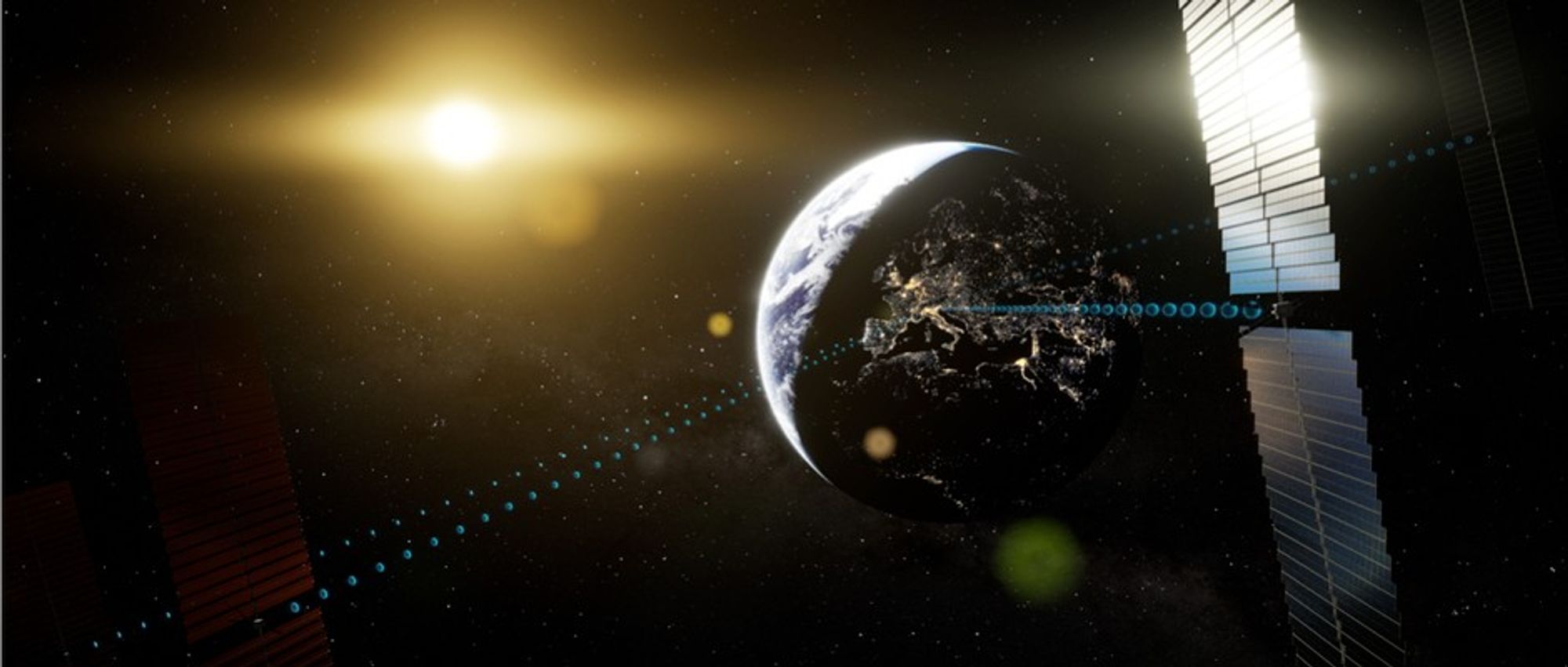©Andreas Treuer

In late November 2022, a collection of Europe’s science ministers met in Paris to decide on the European Space Agency’s priority list for the next three years. A decision they took there could help wean Europe off fossil fuels and provide ESA’s member states, which includes the UK, with their own secure source of energy in the future. The item that they green-lit is Solaris, a bold project to investigate the feasibility of building commercial power stations in orbit.
These power stations would run on sunlight. They would be equipped with extraordinarily large solar panels to soak up the Sun’s energy, converting it to electrical power. They would then beam it down to Earth as microwaves. On the ground, huge collecting antennas would receive these signals and feed the resulting power directly into the electricity grid.
It sounds like science fiction, but as ESA’s Dr Sanjay Vijendran points out we have actually been doing something very similar for the past 60 years. “Every telecommunication satellite since the 1960s is basically a space-based solar power satellite in a small format,” he says.
That is because such satellites generate electricity with their solar panels and use it to beam messages to Earth, this is then converted back into electrical signals so that the data can be read. “The physics involved in that whole chain is exactly the same for space-based solar power, but the scale of it is completely different,” says Vijendran.
The size of solar panels needed to do this on a commercial power basis would measure kilometres across. That’s ten times longer than the solar panels on the International Space Station. They would need to be constructed 36,000 km away from Earth in the same orbits as the telecommunications satellites so that they stay above their ground stations, and they would have to be constructed by robots.
More like this
ESA and NASA unveil bold plans for the future of space exploration
As extraordinary as they sound, the thing that has actually prevented us from building these stations already is much simpler: the cost of launching material into space.
Traditionally, it costs about $1,000 [£820] to launch every kilogram into space, and because of the size of the satellite, this would make the cost of the resulting electricity far too expensive to be commercially viable.
But things are rapidly changing. With the advent of SpaceX and its totally reusable rockets, the cost of launch is rapidly falling. “Three hundred dollars a kilogram is the holy grail for space solar power,” says John Mankins, a former NASA physicist who is now president of Artemis Innovation Management Solutions LLC.
Mankins is a world expert on solar power satellites, having worked on many feasibility studies from the 1990s onwards. Each time he has investigated the concept, the study has shown that the cost of launch is the prohibitive thing. But now he clearly perceives that the situation is changing.
“Three hundred dollars per kilogram is not just possible someday, it's inevitable in the next five or seven years,” he says.
Hence, why ESA is now collaborating with European industry to produce two independent designs for space-based solar power satellites. They are also beginning a technology development programme on solar cells and large-scale antennas, searching for ways to make them lighter and more efficient than they are today.
The great promise of space-based solar power means that it is not just ESA perusing this technology.
In the UK, the Frazer-Nash Consultancy published a report in September 2021 for the Government that concluded: “space solar power is technically feasible, affordable, and could both bring substantial economic benefits for the UK, and could support Net Zero pathways.”
The Chinese are also pushing ahead with a technology development programme and plan to demonstrate the feasibility of beaming power from orbit to Earth for the first time in 2028. This will not be a commercial power station but a demonstration mission to low Earth orbit. Nevertheless, it would be a significant development if successful.
In the US, the California Institute of Technology launched a technology demonstration satellite called Space Solar Power Demonstrator (SSPD) in early January 2023. It was not designed to beam power to the ground but it is testing different types of solar cells and other technologies that will be needed in a full-blown orbital power station.
“We’ve clearly got some catching up to do,” says Vijendran.
If all goes well with the European plan, in three years’ time Solaris will return to the next meeting of Europe’s science ministers to ask for the money to build actual satellites and begin scaling up the technology into something commercially viable.
“Solaris is a bridge to check that this is really doable and that it would really help before we ask for billions of euros,” says Vijendran.
About our Experts Dr Sanjay Vijendran and John Mankins
Dr Sanjay Vijendran is Lead for ESA's Solaris initiative on Space-based Solar Power, Mars Exploration Strategy Team Leader and Future Mars Studies (MarsX Team) Coordinator at ESA.
John Mankins is President of Artemis Innovation Management Solutions LLC.
Read more about space:
- What are Lagrange points?
- JUICE: What secrets lie beneath the icy surface of Jupiter’s moons?
- NASA’s Lunar Gateway: The plans for a permanent space station that will orbit the Moon
Authors
Dr Stuart Clark is an astronomer, science journalist and author of several popular science books, the latest of which is Beneath the night: How the stars have shaped the history of humankind. You can find a version of his book, remade for radio, called Beneath the Night over on BBC sounds. Stuart is also a fellow of the Royal Astronomical Society and he regularly works with European Space Agency to communicate their work to the general public.